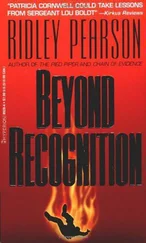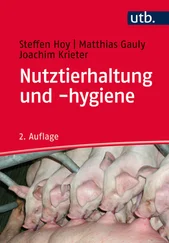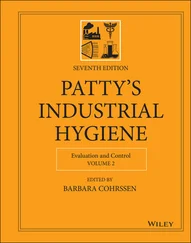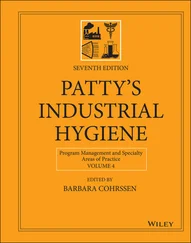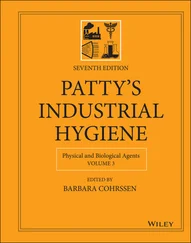1 ...6 7 8 10 11 12 ...40 The original authors of this chapter noted that a thought‐provoking concept on associations between environmental stresses and health decrements was developed by Professor Theodore Hatch and put forward in the 1960s. His concept examined associations between stresses and the human body's adjustments, compensations, and finally breakdown and failure, in response to them (45). The concept was considered particularly useful at the time in understanding the effects of multiple risk factors of both occupational and nonoccupational origin.
Determination of the effect of lower levels of exposure to a specific agent on the health of workers over a working lifetime, such as from nonoccupational sources, was and continues to be more difficult. Often this is done through extrapolation of other analogous data or by utilization of current retrospective exposure assessment techniques to estimate past exposures. In the lower range of the dose–response region, the incidence of disease from exposure to an agent may be so low that it approaches the level for that disease in the community outside the industry under study. This is thought to result in part from confounding exposures of the general population to risk factors such as smoking, alcohol consumption, drug use, hobby activities, community, and in‐house pollution. These incidental stresses may be similar in magnitude to those on the job, or may be additive, accumulative, or synergistic with stress from on‐the‐job exposures. For various reasons, often including limited study population size, even well‐controlled studies may not be sensitive enough to give sufficient data, which might be reliably extrapolated to the lowest dose–response region for lifetime exposures.
By the end of the 1960s, the profession was still small with 647 CIHs certified by the ABIH.
2.6 1970s: OS&H Legislation and Its Impact on the Industrial Hygiene Profession in Several Countries
In the United States, passage of the OSHAct of 1970, which has the purpose of assuring “…so far as possible every man and woman in the nation safe and healthful working conditions …”, had a very broad bearing on the further development and practice of the industrial hygiene profession in the United States. The OSHAct and the regulations deriving from it have been substantial factors in the broad recognition and development of industrial hygiene as a science and a profession. The profession underwent tremendous growth in all of its concepts and technical aspects to meet its expanded responsibilities. Other industrialized countries had similar experiences in the professional recognition and growth of the science of industrial hygiene including the Roben's Report (UK) which led to the UK Health and Safety at Work Act 1974.
In 1970, the US Department of Labor's newly‐formed Occupational Safety and Health Administration (OSHA) (46) greatly increased the demand for industrial hygienists. In April and May of 1971, OSHA published lists of construction and general industry permissible exposure limits (PEL) that adopted and superseded those in the 1969 Walsh–Healey standard.
Standard methods of industrial hygiene practice continued to be established in the 1970s. For example, AIHA established its laboratory accreditation program in 1974 and the National Institute for Occupational Safety and Health published many analytical methods for use by industrial hygienists in 1974 (47), and the key elements of modern industrial hygiene exposure assessment were defined in 1977 by the National Institute for Occupational Safety and Health in a sampling strategies manual (48).
By the end of the 1970s, nonoccupational or public health hazards such as community exposures were generally considered to be aspects of industrial hygiene professional practice. While still a small profession, the 1970s saw the doubling of the number of CIHs from 647 at the end of the 1960s to 1750 by the end of the 1970s.
Elsewhere in the world, there were similar concerns regarding the professional qualifications and the need for certification of professional hygienists. In the United Kingdom, the Institute of Occupational Hygienists was formed in 1975, and professional qualification came under the control of the British Examining and Registration Board of Occupational Hygiene (BERBOH) (49).
2.7 1980s: Growth and Major Changes in the Nature of Industrial Hygiene Profession
Increasingly, industrial hygienists became involved with allied fields in the management of aspects of environmental/community affairs in the 1980s. An example of the merging of industrial hygiene and environmental/community affairs in the 1980s, was the global chemical industry addressing opportunities for protection of the health and well‐being of both their employees and the communities in which their plants operated. An initiative identified as Responsible Care . This initiative required companies to pledge to manage their business according to listed principles (50). These principles pledged certain practices in controlling sources of exposures to employees and generally endorsed good industrial hygiene practices to augment both community and worker health. There are over 40 country chemical industry associations with Responsible Care programs in place.
In addition, the 1980s saw a large increase in the number of industrial hygiene samples collected, and it has been noted (by Cherrie below) that the majority of industrial hygiene samples collected historically likely occurred in the 1980s. For example, if you search the National Institute for Occupational Safety and Health (NIOSH) site for Health Hazard Evaluations (HHE) in the period of 1980 to 1989, you will see that 1429 HHE were conducted versus 780 in the next ten year (51). This information was critical to developing and improving the science of dose–response for stressors found in the workplace and the environment. Indeed, once this exposure assessment information was systematically collected, many important risk assessment efforts were undertaken by government agencies in the 1980s, such as for benzene and asbestos (52). The science of exposure assessment continued to improve throughout and after the 1980s. Increasingly industrial hygienists assisted in the development of exposure estimates to improve the power of epidemiology surveys. As noted by Cherrie, since that time “there have been considerable developments in the science of human exposure assessment and in particular in the development of theoretical models to describe exposure to hazardous substances” that have caused or at least contributed to the decline in the use of personal sampling techniques beginning in the 1990s (41). Current developments in sensor technologies may well reverse this previous trend with a myriad of increasing personal measurements in the future.
While continuing to still be a relatively small profession, the 1980s again saw the doubling of the number of CIHs from 1750 at the end of the 1970s to 4581 by the end of the 1980s.
2.8 1990s: Growth of Industrial Hygiene Management
In the 1990s, sophisticated industrial employers began to see industrial hygiene programs as an investment to keep their workers more productive. The purpose of an industrial hygiene program was and is to ensure a healthful workplace for employees. An effective program should include all the functions needed to anticipate, recognize, evaluate, and control health hazards to workers associated with production, office, and other work, as well as any related risk for family members or the community. This requires a comprehensive program designed around the nature of the operations, documented to preserve a sound retrospective record, and executed in a professional manner. An integrated program is capable of responding to the need for the establishment of appropriate exposure controls, both for current needs and for those that may result from technological advances and associated process changes.
Читать дальше


